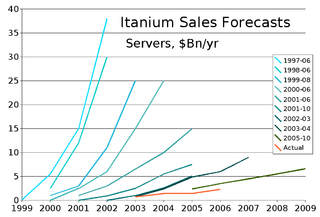I'm not convinced it would pan out like that. Intel didn't dominate HPC with Itanium despite access to that design talent and leading-edge process nodes. Nor did it deftly bring said resources to bear on the discrete GPU market with its larrabee efforts.
In theory it should work out like, in theory they should have no excuse for not dominating any given segment with a superior IC (both superior in design and superior in process-node characteristics)...so far they only seem to fire on all cylinders when it involves x86 mainstream designs (both Larrabee and Atom were/are x86 and they haven't exactly dominated to date).
Another datum point is the fact that Intel use to design/produce their own ARM chips (
StrongArm and, later,
XScale) and yet they did not dominate their competitors in the same space.
Intel, for all its highly visible successes, is like that baseball slugger who steps up to the mound and swings wildly at every pitch with reckless abandon giving no consideration for whether or not the ball is high, low, outside, etc all while looking up at the grandstands because it expects that ball to be a homer, it ain't swinging to make singles or doubles, RBI's are not the strategy, it wants a homerun and nothing less, each and every time...only more often than not it strikes out and gets to go take a seat in the dugout.



